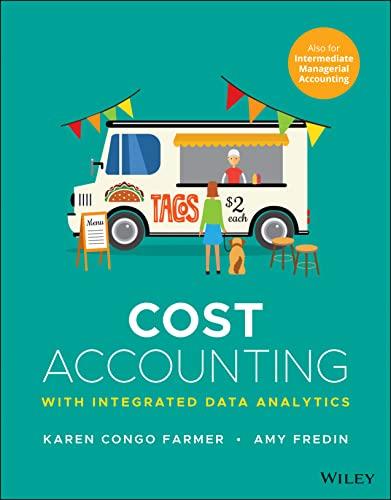Answered step by step
Verified Expert Solution
Question
1 Approved Answer
The QBID is part of itemized deductions. Non recourse borrowing of a partnership increases the at risk basis of each partner in interest in the
The QBID is part of itemized deductions.
Non recourse borrowing of a partnership increases the at risk basis of each
partner in interest in the partnership.
Tax exempt interest income decreases the basis of each partner's interest
in the partnership.
A partner's regular basis in a partnership equals the fair market value of
the property contributed, plus the partner's share of all liabilities, minus
any liability of the partner assumed by the partnership.
A capital loss is deductible in order to determine the ordinary income
of a partnership.
If a married couple's taxable income is $ the restrictive
rules for SSTBs do not apply.
Section gains are separately stated items for a partnership.
A partner does not recognize any income when services are
exchanged for a partnership interest.
An ordinary loss is fully deductible by a partner without regard to his
partnerships basis.
The QBID for a single taxpayer with taxable income under $
is the lessor of of qualified business income or of taxable
income plus capital gains.
After the initial formation of a partnership, the partner's basis will
increase by their pro rata share of losses.
Under Section when a partner contributes property with a
FMV that is higher than the property's adjusted basis, a pre contribution
gain is suspended and will be allocated to the contributing partner
when the property is sold by the partnership.
Under Section the partnership's basis in the contributed property
is the contributors fair market value.
Short term capital gains are separately stated items for a partnership.
A liquidating cash distribution may reduce the recipient partner's
basis below zero.
A non liquidating distribution of only cash, may result in a deductible
loss.
If a partner has a basis of $ in a partnership, and receives a
non liquidating distribution of land with an adjusted basis of $
but a FMV of $ there will be a gain of $
In a nonliquidating distribution of property, the partner's basis
must equal zero.
A partner recognizes a gain on a distribution only to the extent that
cash received exceeds the partner's basis in the partnership.
In a nonliquidating distribution, if there is sufficient basis to the partner,
the property received will have the same basis to the partner as the
property had to the partnership.
I need each one answered as true or false.
Step by Step Solution
There are 3 Steps involved in it
Step: 1

Get Instant Access to Expert-Tailored Solutions
See step-by-step solutions with expert insights and AI powered tools for academic success
Step: 2

Step: 3

Ace Your Homework with AI
Get the answers you need in no time with our AI-driven, step-by-step assistance
Get Started


